Whaling is a generational profession, steeped in lore and heritage. Burly hunters take to the sea in hopes of impaling the largest mammals on earth. Not without controversy, the tradition of whaling still occurs in far-off places. Visceral images and videos occasionally leak, stoking the flames of global dissension.
Many are familiar with the annual whale hunts on the western Alaskan coast and the bloody waters of the Faroe Islands, though few are familiar with the tropical whalers of the Caribbean.
St. Vincent and the Grenadines is an island nation comprised of 32 islands and cays. Historically, whaling has taken place throughout the island chain; however, current whaling activities occur on the island of Bequia and in the village of Barrouallie, located on the island of St. Vincent proper.
Russell Fielding has been researching the history and cultural significance of whaling on St. Vincent and the Grenadines for many years, returning annually. His longest stretch on the island was three months, in which he spent six days a week immersed on a whaling boat.
“Nobody in the Caribbean was hunting whales until the Americans came down,” Fielding said. During the height of the American whaling industry (circa 1850), American ships would set sail with a skeleton crew. Upon reaching St. Vincent, they would hire locals, which reduced costs by exploiting the cheap labor of island inhabitants. Of course, after being hired on, they were shown the ropes, digesting the ins and outs of spotting, harpooning, and retrieving the economic treasures. The training typically occurred on smaller whales and cetaceans, such as dolphins. Once trained, they set out after their target species, which included humpback and sperm whales.
It’s believed the last American commercial whaling vessel visited the island in the 1920s, coinciding with the last gasps of the commercial whaling industry. Left to their own devices, the native Vincentians traded out the large three-masted vessels for a new flagship, their island home. In sub-30-foot row boats and sailboats, the trained up whalers used the same techniques generation after generation.
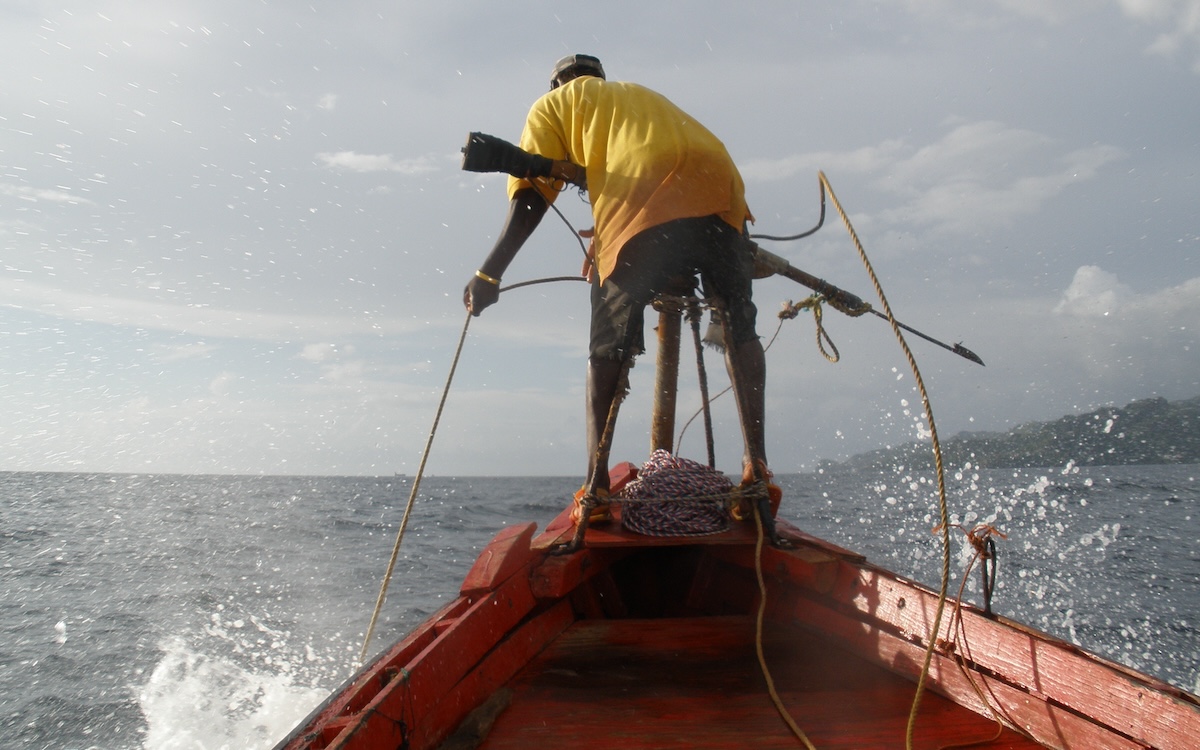
While speaking to the contemporary state of the island whalers, Fielding said, “They’re still throwing harpoons, they’re still using the same techniques to spot the whales. They even use some of the same language for the parts of the boat that came directly from the American whalers.”
In a 1995 edition of Outside Magazine, St. Vincent historian Herman Belmar spoke to the aptitude and tradition of the island’s whaling culture, claiming that the crew from Melville’s Moby Dick could board the boat and immediately communicate with modern-day Vincentians.
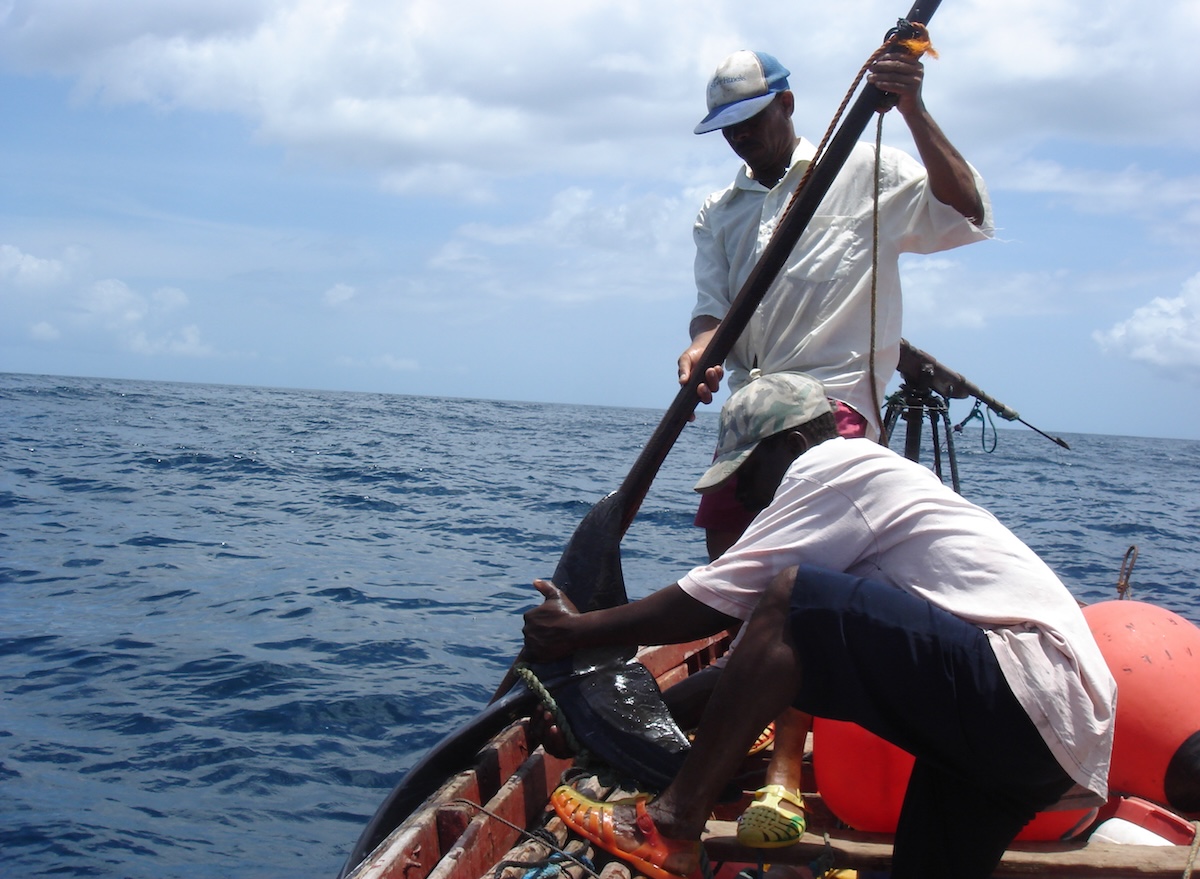
“Well into the 1980s and 1990s, they were still singing the old New England sea shanties,” from the early commercial whaling days, claims Fielding. The introduction of the outboard motor is what drowned out the maritime tunes written to coordinate oar strokes for efficiency. Isolated and self-reliant, the whalers of St. Vincent continue to command a slight Irish accent, a relic of Yankee visitors from two centuries ago.
According to research conducted by Russell Fielding and Jeremy Kiszka, over a 68-year period, a total of 13,856 small cetaceans and whales have been harvested by residents of St. Vincent. This includes 5,896 short-finned pilot whales, 109 orcas, and 7,851 other small cetaceans.
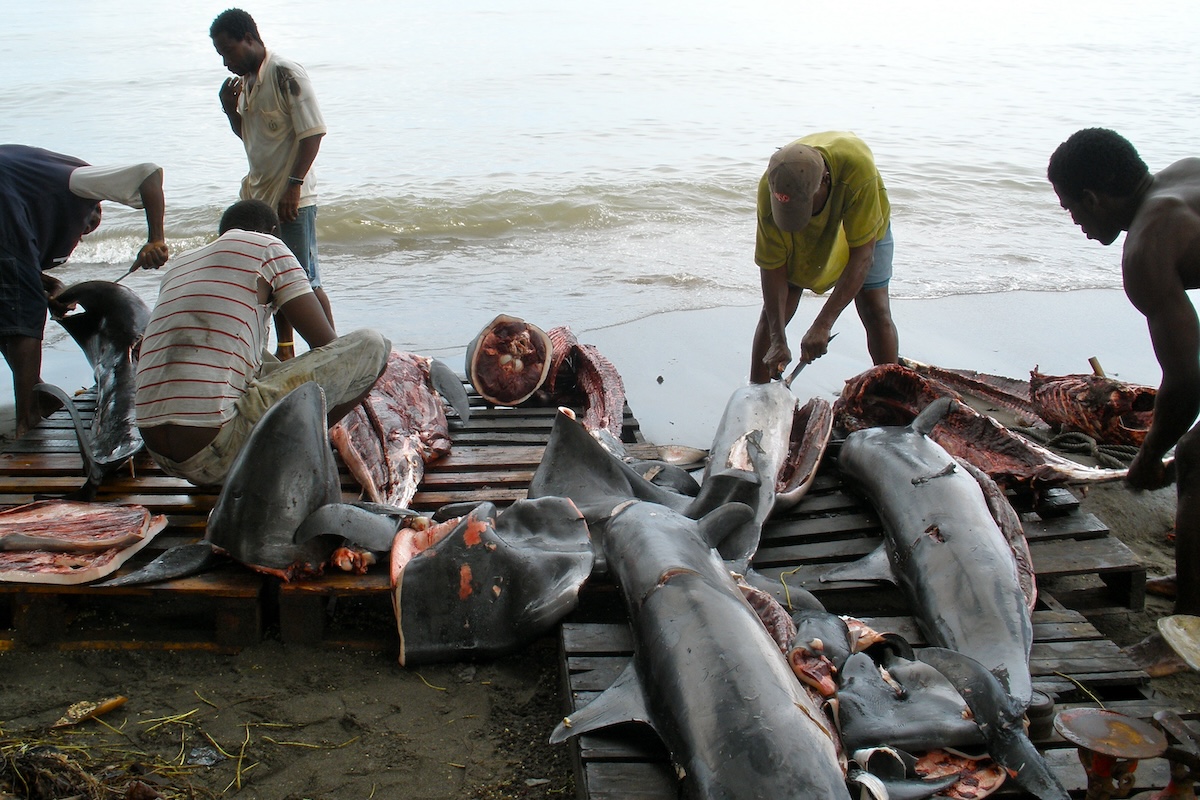
In particular, the targeting of orcas has been a sore spot for those against whaling. As of January of this year, the tropical hunters agreed to quit targeting killer whales. Chief Whaler of Barrouallie, Mr. Samuel Hazelwood, said in an interview, “Each time we catch the killer whales, there is always an issue, not so much from locals, but from outside organizations.”
While the images of orcas hacked up on a beautiful Barrouallie beach incite anger, the actual number of orcas taken compared to short-finned pilot whales and smaller cetaceans is insignificant. “Orcas were always a supplementary and rare catch,” Fielding said. “Pilot whales have been the ones they have been going after 100 years or so.”
Remarkably, as of 1995, when Sebastian Junger published his piece exploring the whaling world of St. Vincent in Outside Magazine, only one whaler had been recorded dying at sea. “As dangerous as it is, only one Bequian has ever lost his life in a whaleboat: a harpooner named Dixon Durham, who was beheaded by a whale’s flukes in 1885. So cleanly was he slapped from the boat that no one else on board was even touched.”
This isn’t to say injury is uncommon. In that same article written by Junger, a whaler by the name of Athneal Ollivierre was knocked out by a whale’s fluke. The rope attached to the harpoon wrapped around his leg. “It sawed down to bone in an instant, cauterizing the arteries as it went, and nearly ripped his hand in half,” Junger wrote. “Ollivierre refused to cut the rope because he didn’t want the whale to get away, but finally, the barnacle-encrusted fluke severed it for him. The boat returned to shore, and Ollivierre walked up the beach unassisted, his tibia showing and his foot as heavy as cement. Two men on the beach fainted at the sight.”
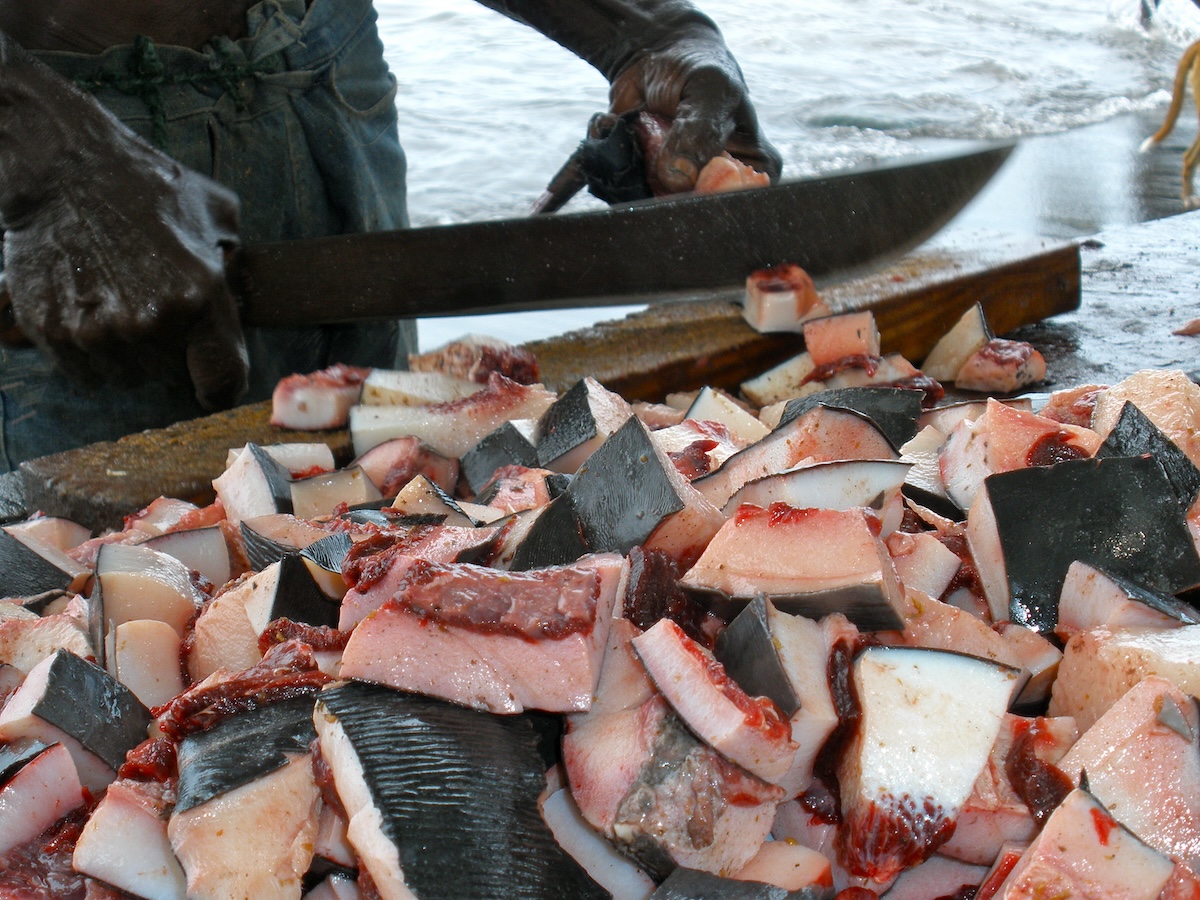
To this day, whalers employ the traditional techniques of their American forefathers. After a lifetime of practice, “they can recognize a whale from 500 meters away from the shape of their spray,” Fielding said.
Their competency is expressed by their inclination to use hand-thrown harpoons instead of the modified gun harpoons mounted on the bows of their small boats. Fielding approximated 85% of the time, Vincitian whalers opt for the old-fashioned method of spearing a whale, ditching the need for expensive cartridges.
The hunters will often size up the whales before making a commitment. If they are too large, they will pass on the animal, avoiding the infamous Nantucket sleighride. The ideal kill is a whale small enough to tie around a loggerhead, similar to the horn on a saddle. The added friction slows the fleeing whale, tiring the mammal out. On occasion, a secondary harpoon is required, or a lance is used to pierce the heart. They know they hit the mark when pure, dark blood spills from the blowhole.
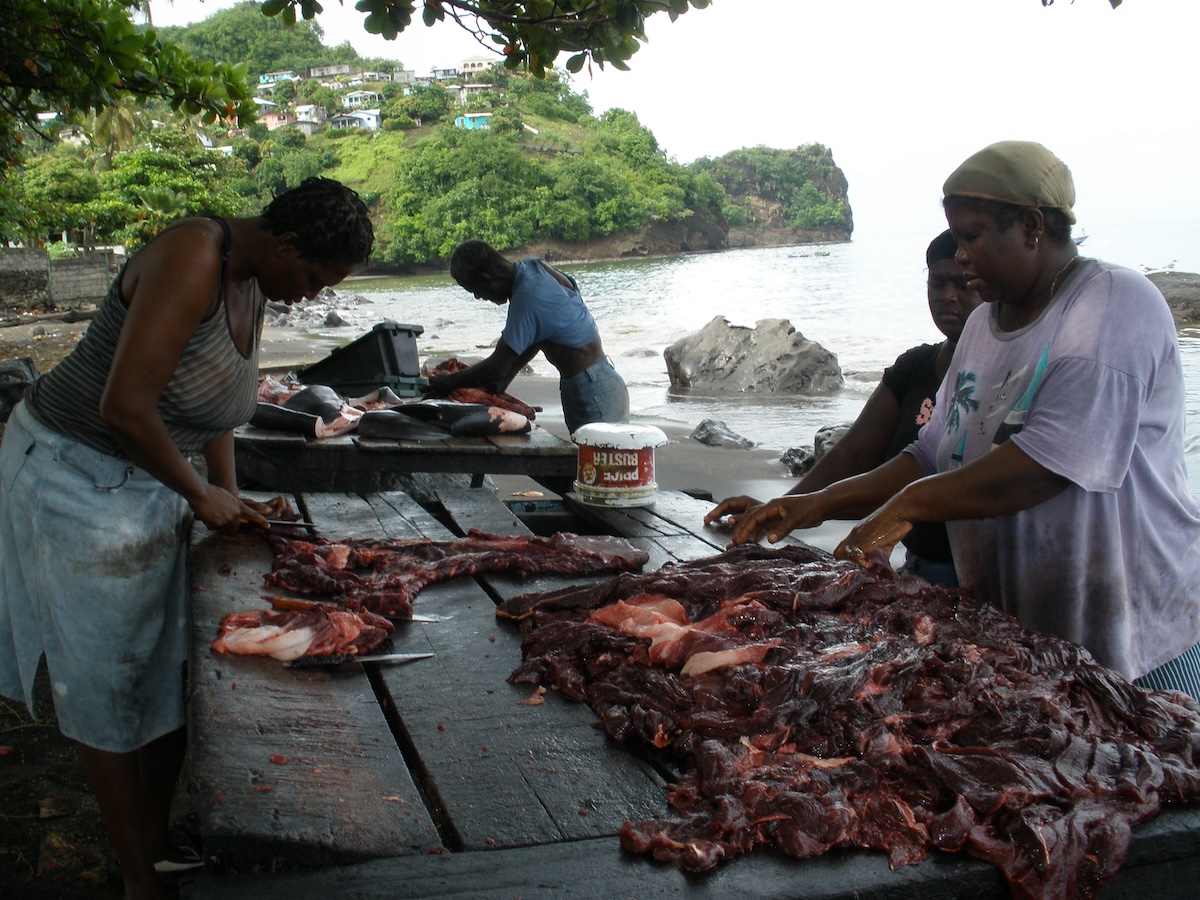
After dragging the beast back to their flagship island, the whale is sold to a fish vendor and processed on the beach. The butchers, working for the fish vendor, begin by hacking the whale into large chunks with cutlasses, once again referencing old seafaring terminology. The meat is then separated from the blubber, and the liver and kidneys are pulled from the guts.
After the initial butchering, the fat is cubed and thrown into a metal drum with a heat source below. As the rendering process takes place, the large cubes of blubber shrink and become crispy — a typical snack throughout the 32 islands and cays. The rendered oil byproduct is sold for medicinal purposes. The meat is cut thin and sun-dried on large racks near the beach, at which point it’s wrapped in banana leaves and sold to locals. In the kitchen, the lean meat is reconstituted into soups and stir-fries.
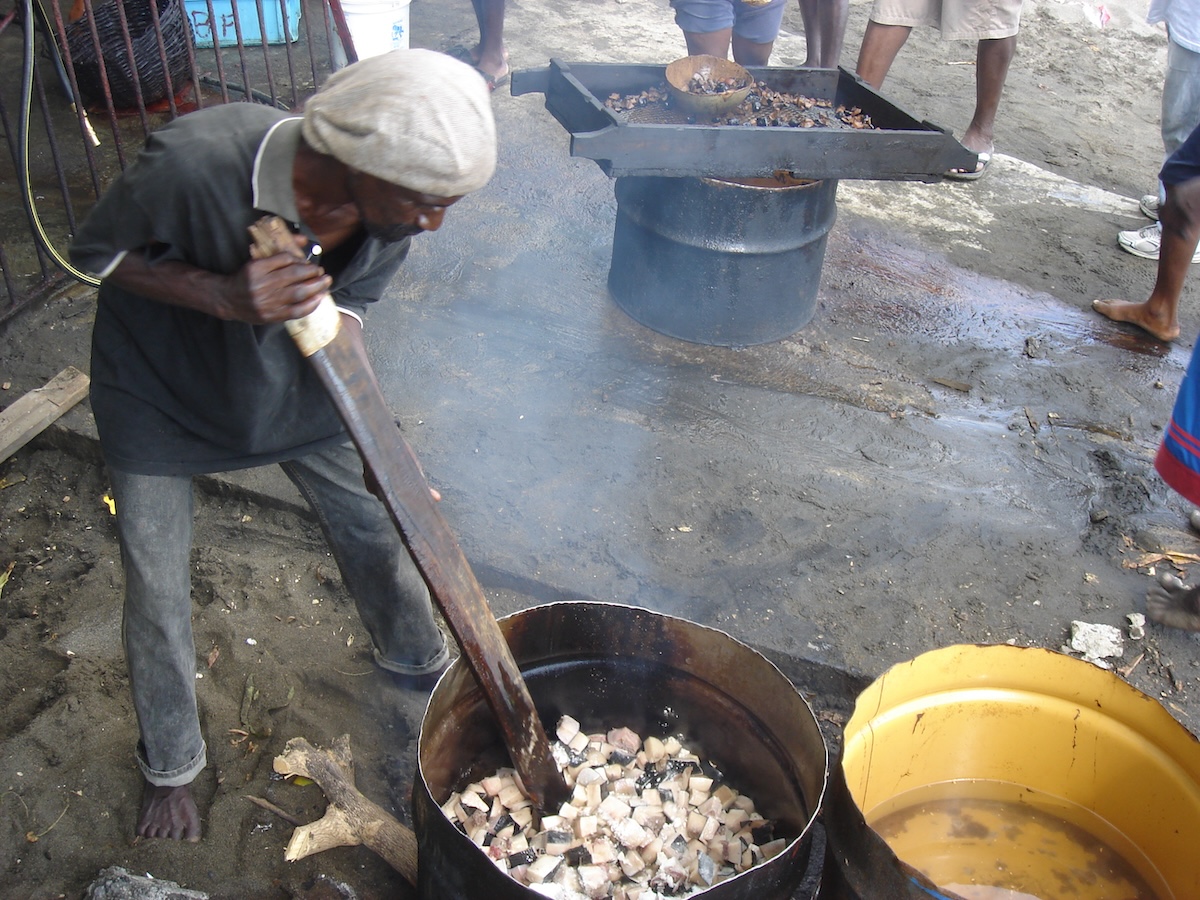
While mercury levels in whales and dolphins are a concern for many, the residents of the small island nation continue the tradition—a food source rare to many, but common to them—integral to the Vincentian culture, and a hill they appear willing to die on.
Instead of attempting to articulate a proper conclusion to this wild story, I will leave you with the words of Sebastian Junger, “A long winter swell will be running. The sunlight will catch the spray like diamonds. He’ll be in the bow with his thigh against the foredeck and the harpoon held high. The past and the future will fall away, until there are no politics, no boycotts, no journalists. There will just be one man with an ancient weapon and his heart in his throat.”
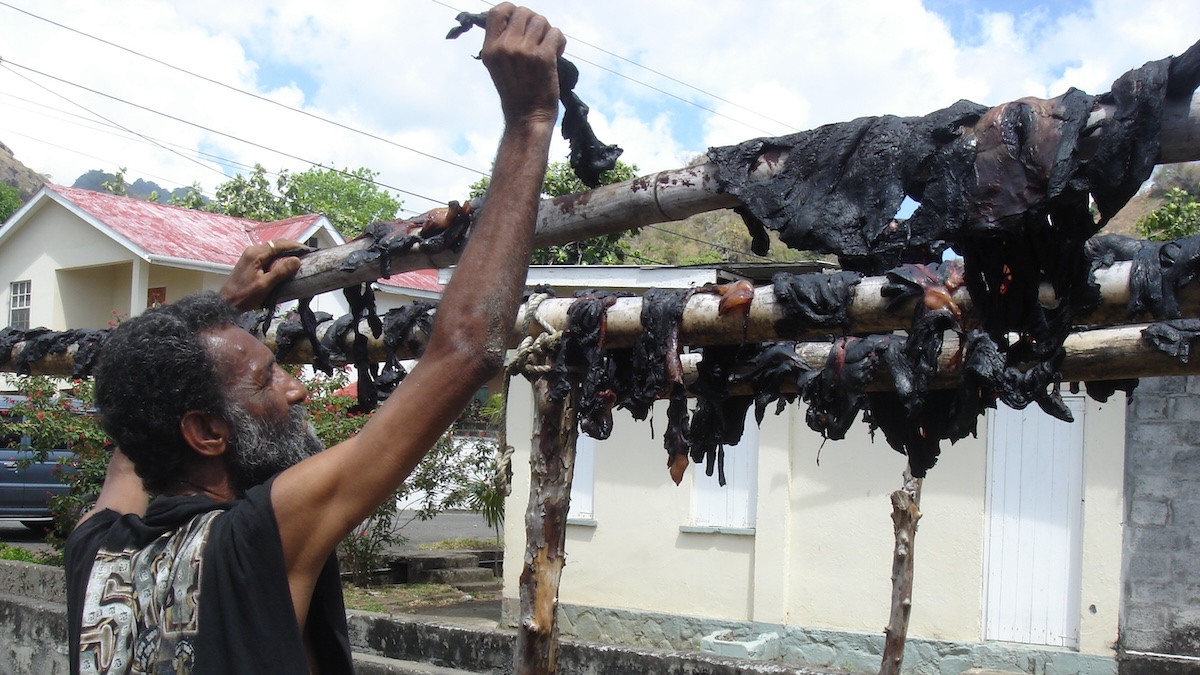
Images via Russell Fielding.
Read the full article here

